Creating a Digital Book Club in Our School

Matt Renwick was principal of Howe Elementary School in Wisconsin Rapids, Wisconsin when this article was written.
In May 2011, Amazon reported that its sales of digital books surpassed print books for the first time ever. Three years later, data continues to show that reading with digital devices is rising sharply. These results are largely attributed to the influx of tablets and eReaders in homes. During the 2013 “Black Friday” shopping days, Walmart alone reported selling 1.4 million tablets.
Reading as we’ve known it is changing. Consider your own reading habits. If you factor in emails, agendas, reports, meeting minutes and professional articles – in addition to any recreational reading you find time to do – chances are that your reading is becoming more and more digitally based.
I know that in my own personal life, and in my work as a K-5 school principal, at least half of what I read now is rendered in pixels instead of ink. Our schools should not insulate themselves from these changes but embrace them.
And if you’re worried that the shift to digital means less reading overall: the good news is that people are reading more than ever before. Goodreads, the online community for bibliophiles, saw its online community double to 20 million in less than a year. Members can not only post reviews and rate books but enjoy notifications about favorite author news and events and swap comments with other readers.
Now that the concern about lack of reading due to technology has basically been debunked, what is the next step? We should truly infuse our students’ daily reading diet with digital text.
Whether on a tablet, computer, or eReader, providing access to a wider base of information and narratives can only serve to increase our students’ intelligence, enjoyment, and perspectives. When we emulate within our classroom walls what real readers do, we provide authentic reading experiences for students who can form habits and relationships, both fictional and real, that can last a lifetime.
I believe digital book clubs can help us accelerate this process.
Authentic, ongoing conversations
Bringing online conversations around books (much as Goodreads does) into the schoolhouse can prepare our students for what reading looks like today and tomorrow. There are several advantages to this approach. First, we can extend the school day in a way that makes sense. Conversations that have to be halted when class ends can now continue after hours.
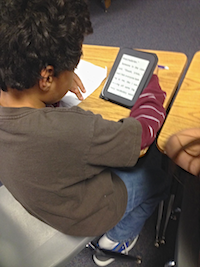
So where does this start? Like many innovations, change needs to come from the leaders in the organization. Principals and teachers can show the way by organizing online and digital reading activities that not only engage kids but show the growth in student learning and showcase their successes as readers. Here is one way my school has applied technology to help our kids connect with others about what we are reading.
Our book club grew from necessity
Our school’s interest in involving students in online reading communities actually emerged from the success we had with faculty book studies inside a Google+ Community. That’s a story for another time, but the positive results led me to believe we could have similar success with our younger learners. (As an instructional leader, I have often found that the same learning strategies that work with adults can be applied to the work we do in classrooms.)
One example of this concept at work is with our after-school reading intervention. Due to budget cuts, we could no longer provide reading support during the school day or after school for our 4th and 5th graders. What’s more, the computer-based literacy program we previously had in place had not shown the results we had hoped for. This turn of events accelerated changes we should have considered anyway. Pulling students out of their regular school day had not served our older students as well as we would have liked.
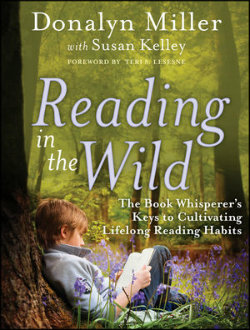
As a way to connect with each other beyond the two after-school intervention meetings per week, students were invited to post their responses to their reading on Kidblog. This web-based tool provided a safe forum for our 4th and 5th grade students to converse with each other about what they were reading.
Using digital tools such as Kidblog and eReaders in and of itself may have been a unique way to engage students in reading. But the students would not have stuck with this program because of access to technology alone. Two other elements for engagement, purpose and audience, proved to be the difference makers. When learners know that they will receive feedback when posting their thoughts and questions about what they’re reading, they see how these digital forums can serve them compared to just chatting about the mundane.
The time that students spend online between the face-to-face interactions can extend the learning day and keep learners close. Relationships and trust can be built with others even when we are not in the same room. Just as important, providing students with authentic experiences – activities that we as adults would also engage in (think Goodreads) – allows them to see themselves as authentic readers and writers, because others saw them in this light.
What we’ve learned so far
Now that the year is complete, what do we have as evidence of our success? I think our biggest achievement is the make-up of the group. We stopped referring to this offering as an “intervention.” It was a book club.
All students, whether proficient or not in reading, were encouraged to join this activity. While our lowest readers received special invitations, having a diversity of abilities and interests paved the way toward a more authentic community of readers.
The advisors also surveyed the students about their affinity for reading. The readers theater performance, having access to eReaders, and the blogging aspect of book club were their favorite activities. This information prompted us to have the eReaders available to all intermediate students in our school, by way of checking them out through our library media center.
For next year, we are discussing ways to be more systematic about collecting data to measure the effectiveness of our program on student reading engagement. But we don’t plan to quantify the results. Instead we’ll ask questions like: Do they read without the need of a log? Have they ever saved up their allowance so they could get that special title on its release date? Has a whole afternoon passed by because they were so immersed in a book?
Questions like these are the true measure of a lifelong reader.
It’s about more than reading
All learning is social. We develop new understandings from each other. Print, whether digital or on paper, happens to be one of the ways people communicate. Bridging these two worlds through social media such as Google+, Twitter, and Edmodo gives us that authentic experience of what read readers do.
Our work is not just about raising readers. We have an obligation to teach our students to be critical thinkers of what we read and investigate multiple perspectives before we can say we “learned” something.
In order for anyone to grow, we must first acknowledge that we may not know something. This can be scary. To be open about our deficiencies requires a strong relationship and a level of trust with those we learn from and with. Our desire alone to gain this skill or disposition is not enough. We have to show our students that connections formed both online and in person can be deep and meaningful.
Accentuating our face-to-face time with digital dialogue can give us a more comprehensive learning experience without losing balance. Living in the now means being present for what’s important. Showing our students, parents, and colleagues how this works through digital book clubs is one way this can happen.
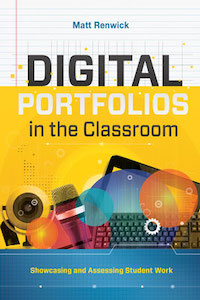
Matt blogs at Reading by Example and tweets @ReadByExample. Visit his professional site to learn about his popular newsletter and books, including Digital Portfolios in the Classroom: Showcasing and Assessing Student Work (ASCD, 2017), which expands on the ideas in this post.

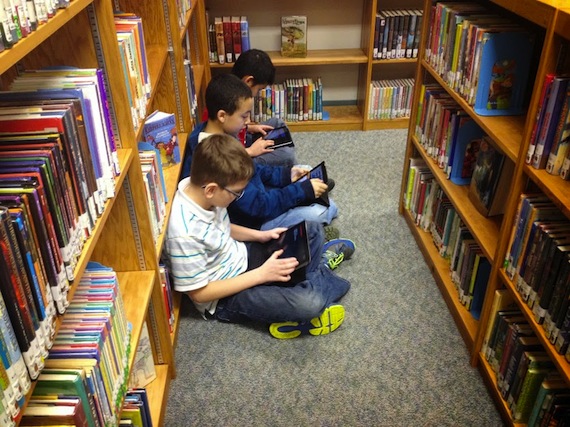
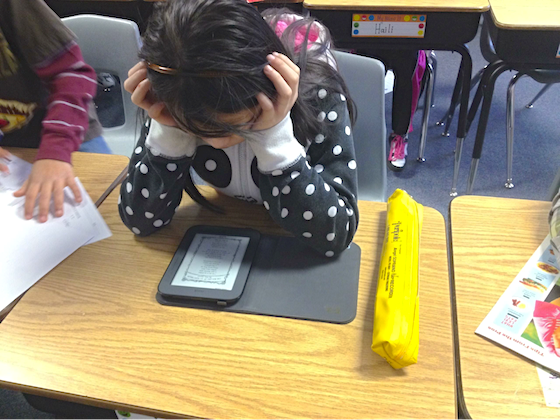
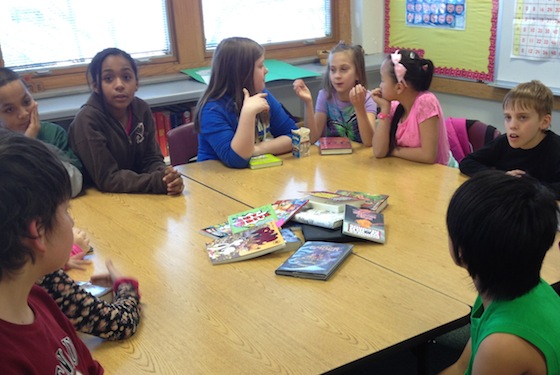



































This is a great idea and I really like the focus on qualitative reading outcomes in addition to quantitative.. I am especially curious about your use of google+ with both students and staff book clubs. Can you lend further insight? Thanks.
Hi Donna. I (sort of) followed up on this post with another one at the Powerful Learning Practice’s blog, about summer learning.
Within it, I briefly discuss my experience hosting an online staff book study. The verdict: Make sure you know what you are getting into.